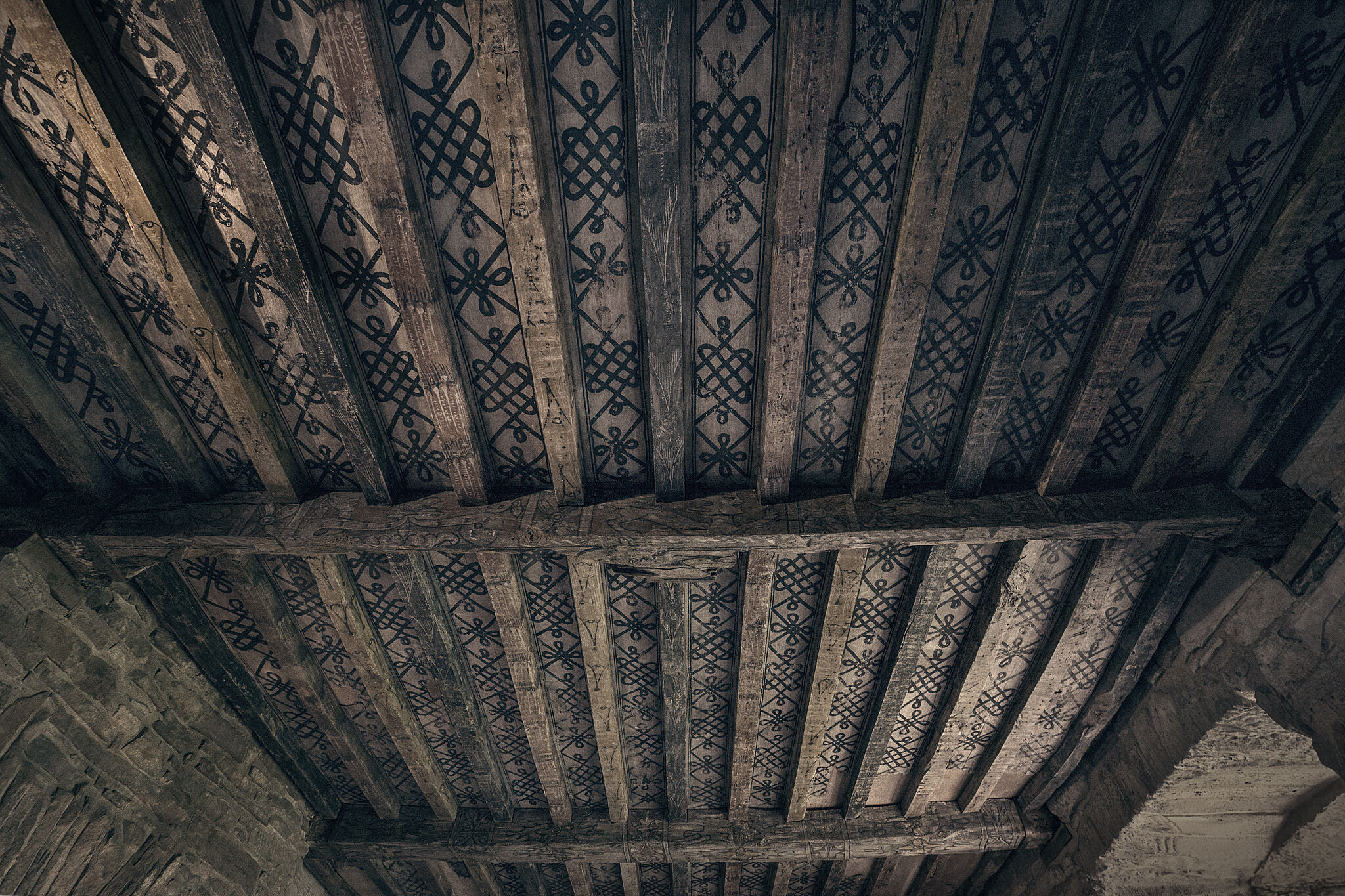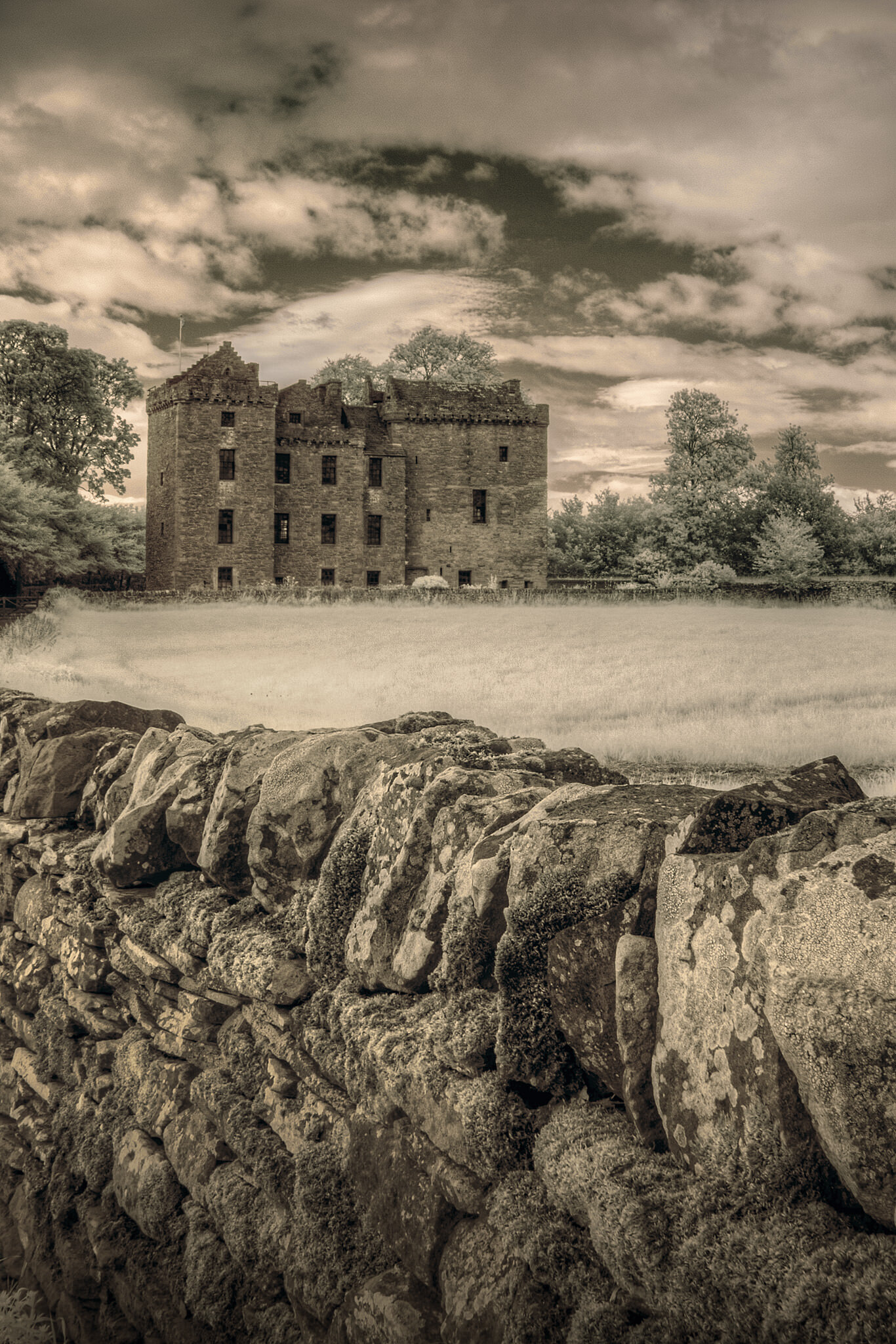Huntingtower Castle, Scotland



Huntingtower Castle was originally known as the Place of Ruthven. The castle was built by the Ruthven family, who later became the Earls of Gowrie. In the 1600’s it passed into the hands of the Murrays, who were the Earls of Tullibardine and later the Dukes of Atholl.
The Ruthven family settled in Perthshire in the late 1100’s, when their ancestors came from East Lothian. The name Ruthven comes from their estate to the west of Perth. William Ruthven swore an oath of fealty to Edward I of England in 1291, yet in 1296, he fought for Scotland during the Wars of Independence. He took 30 men with him, to fight alongside William Wallace in the siege of Perth in 1297. In 1314, William also helped Robert the Bruce capture Jedburgh Castle. William Ruthven was appointed Sheriff of Perth, by Robert the Bruce.
The oldest part of the present castle dates from the 15th century, and by this time it is thought that Huntingtower, or the Place of Ruthven as it was then known, was the Ruthven family's main residence. In 1487, James III bestowed on William's decedent, another William Ruthven, the title of Lord Ruthven.
Huntingtower Castle appears today as one building, but this was not always the case. In the late 17th Century, the Murrays tried to make the old castle look more like a stately home or country mansion. The castle originally comprised of two substantial tower houses, which stood less than 3 meters, (10 feet), apart. The rest of the buildings would have been arranged around a courtyard, as you would have typically found at any tower house. The two tower houses are thought to have been built between 1480 and 1530. It isn’t known quite why two separate towers were built, but there are a small number of other castles, which also comprise of two towers, but this is the only castle where both towers were erected at approximately the same time.
During restoration work in 1913, the painted wooden ceiling was discovered in the east tower. This dates from the 1540’s, and is a remarkable survival. It is one of the oldest, Scottish, tempera painted ceilings in existence.
The ceiling panels are decorated with knotwork patterns, which are drawn in black on a white background. One of the panels shows a running stem and leaf pattern. The designs on the joints are in three simple patterns, and are carried out in black and white. The joists have also been decorated, and alternate a background of red, yellow and black. These also are ornamented with leaf work, and pear shaped fruit, scrolls and animal patterns.
Traces of painted wall plaster, in geometric decorations, can be seen above the north doorway in the hall of the west tower. It would have originally covered the whole of this wall, if not all the walls in the room.
The castle today is not completely unoccupied, as it is home to around 200 Pipistrelle bats that now reside here. They will be noticed by anyone visiting in the warmer months, although they hibernate from October to March. The Pipistrelles are Europe’s smallest bats, growing to between 3.5 and 4.5 cm (1.3-1.7 inches) in length. They emerge to feed in the early evening, but please watch your step when visiting, as they don’t always stay up high, having seen one crawling on the floor while I was there, so thought it best to let you know.
The 3rd Lord Ruthven inherited the castle in 1552. He later became one of the leaders of the Protestant Reformation, during the reign of Mary, Queen of Scots. He was a loyal supporter of Lord Darnley, Queen Mary’s second husband. Mary, Queen of Scots visited the castle with Lord Darnley in 1565, shortly after their marriage. Patrick, Lord Ruthven, was also involved in the murder of Mary, Queen of Scots secretary, David Riccio, at Holyrood Place. He fled to Newcastle afterwards, and died there three months later. His son, the 4th Lord Ruthven, also named William, was also implicated in Riccio’s murder, but he returned to Scotland the next year and assisted with Queen Mary’s imprisonment at Lochleven Castle, as well as her abdication.
William, the 4th Lord Ruthven, attended the Coronation of James VI at Stirling in 1567, and in 1571, he was appointed Treasurer of Scotland. In 1581, King James VI made him Earl of Gowrie, a new Earldom he created out of lands that had previously belonged to Scone Abbey. Just a year later, William still wanted more control, and risked it all when, after inviting the young King James VI to stay at Huntington, he burst into his chamber the following morning and accused Lords Lennox and Arran of being the authors of oppressions and wrongs, deemed subversive to the new Protestant religion. When the King tried to leave, he found that he was barred from doing so. The 16-year-old King James is said to have burst into tears. This event has become known as the ‘Ruthven Raid’. For the next 10 months, the power in Scotland lay with William and his conspirators, until the King escaped in June of 1583. At first, it looked as though King James would forgive his captors and offer them a full pardon. However, after a further threat to the King, which implicated Lord Ruthven, he was ordered to leave the country. He got no further than Dundee, when he was arrested and taken to Holyroodhouse, where he was tried, found guilty and finally beheaded at Stirling. His property was forfeit to the crown.
King James VI of Scotland, (later James I of England), returned the lands of Ruthven Place, later Huntingtower Castle, to Earl Gowrie’s son after his death. Earl Gowrie’s eldest son died young, and the estates went to John Ruthven. He was involved in what has become known as the ‘Gowrie Conspiracy’. While we do not know all the details, we do have the King's version of events, which record that while the King was hunting at Falkland, he was invited to Gowrie’s town house in Perth, and as had happened at the Place of Ruthven 18 years before, the King found himself locked in. After shouting out from the upper windows, he was rescued, but in the struggle Gowrie was stabbed in the neck and killed, along with his brother Alexander. It’s a bizarre story, and we will probably never know the truth of what happened. Following this event, we do know that the corpses of the Gowrie brothers were taken to Edinburgh and indicted for high treason. It did not seem to matter that they were dead already, they were both found guilty. After their sentence, they were taken to the cross at Edinburgh, where they were hanged, drawn and quartered. The name of Ruthven was abolished, and their arms deleted from the Book of Arms. All surviving family members were declared incapable of holding any office, honour or possession. Parliament decreed that the Barony and Place of Ruthven be
’changeit and callit in all tyme coming the place of baronie of Huntingtower.’
Whatever happened, the events afterwards show the Kings anger, and are the reason we do not have Ruthven Place today, but Huntingtower Castle.






